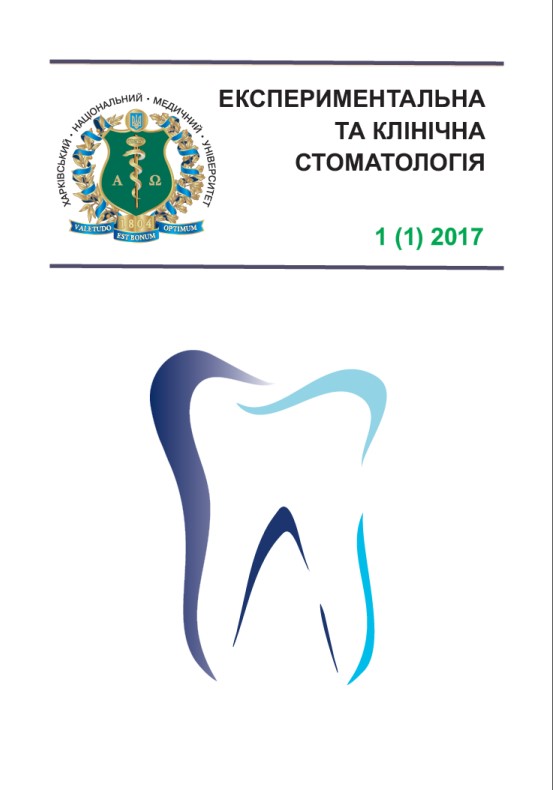Abstract
The basis of dental outpatient reception is the extraction of teeth associated with the possible development of the alveolitis, the essential role in the development of which belongs to the sites of congestion of staphylococci in the nasal cavity, the roto- and nasopharynx with their high contamination with staphylococci and is a stable index of alveolitis development, regardless of age, sex and seasonality. Traditionally, the prevention of alveolitis is the appointment of antibiotic therapy, which does not give any advantage in addition to dental manipulation. In this connection, a group of bacteriostatics with a wide range of action against bacteria resistant to most antibiotics attracts attention. When it is possible to maintain a normal microflora, reduce the risk of adverse side effects of drugs.
Goal. Study of the clinical efficacy of the complex consisting of the preparation Septefril-Darnitsa and the haemostatic sponge "Alvanes" with iodoform in the prevention of alveolitis development.
Materials and methods. 29 patients were examined and treated, age from 23 to 50 years. The main group – 15, control group – 14 patients with similar clinical manifestations. Patients of the main group after the extraction of the teeth, the hole was loosely covered with the haemostatic sponge "Alvanes" and the resorption of the preparation "Septefril-Darnitsa" was prescribed according to the instructions. Patients of the control group of patients in full carried out similar activities without the use of the complex.
Results. Patients of the main group had no signs of inflammation for 2 days already and on the 4th day there was no need for any medical measures. After 1 week – the wells were granulated, the mucous membrane in their area was of normal color. In the control group, signs of development of the alveolitis were observed on the second day, which required the appointment of appropriate therapy. The duration of the postoperative period of the control group patients averaged up to 7 days, whereas the patients of the main group did not need medical measures on the second day after the operative intervention.
Conclusion. The obtained results testify to effective prevention of alveolitis development, which is based on the synergy of local effect on the condition of the hemostatic sponge and the drug "Septefril-Darnitsa". The use of this complex allows reducing the likelihood of complications such as periostitis, osteomyelitis or phlegmon. The use of the complex makes it possible to shorten the period of incapacity for work on average by 4–5 days.
Keywords: tooth extraction, alveolitis, prophylaxis, bacteriostatic.
References
Antibiotiki v stomatologii: blago ili zlo? // [Elektronnyy resurs]. – Rezhim dostupa: http://www.antibiotic.ru/ [In Russian].
Eksperimental'noye obosnovaniye primeneniya fogutsida (anavidina) v stomatologii / YU. A. Sklyarova, R. V. Ushakov, V. A. Kazimirskiy, V. G. Izatulin // Byulleten' VSNTS SO RAMN. – 2006. – Vol. 50, No. 4. – P. 344–346. – [Elektronnyy resurs]. – Rezhim dostupa: http://cyberleninka.ru/ [In Russian].
Timofeyev A. A. Gnoynaya khirurgiya chelyustno-litsevoy oblasti i shei / A. A. Timofeyev. – Kiyev: "Chervona Ruta – Turs", 1995. – 172 p. [In Russian].
Tsarov V. N. Osobennosti vliyaniya khlorgeksidinsoderzhashchikh preparatov na sostoyaniye mikrobiotsenoza polosti rta u bol'nykh paradontitom / V. N. Tsarov, V. I. Chuvilkin, N. A. Megrelishvili // Paradontologiya. – 2003. – No. 2. [In Russian].
Unsal E. Influence of a single application of sublingval chlorhexidine gtl or tetracycline paste on the clinical parameters of adult peiodontitis patients / E. Unsal, M. Akkaya, T. F. Walsh // J. Clin. – Periodontal. – 1994. – Vol. 21, No. 5. – P. 351–355.

